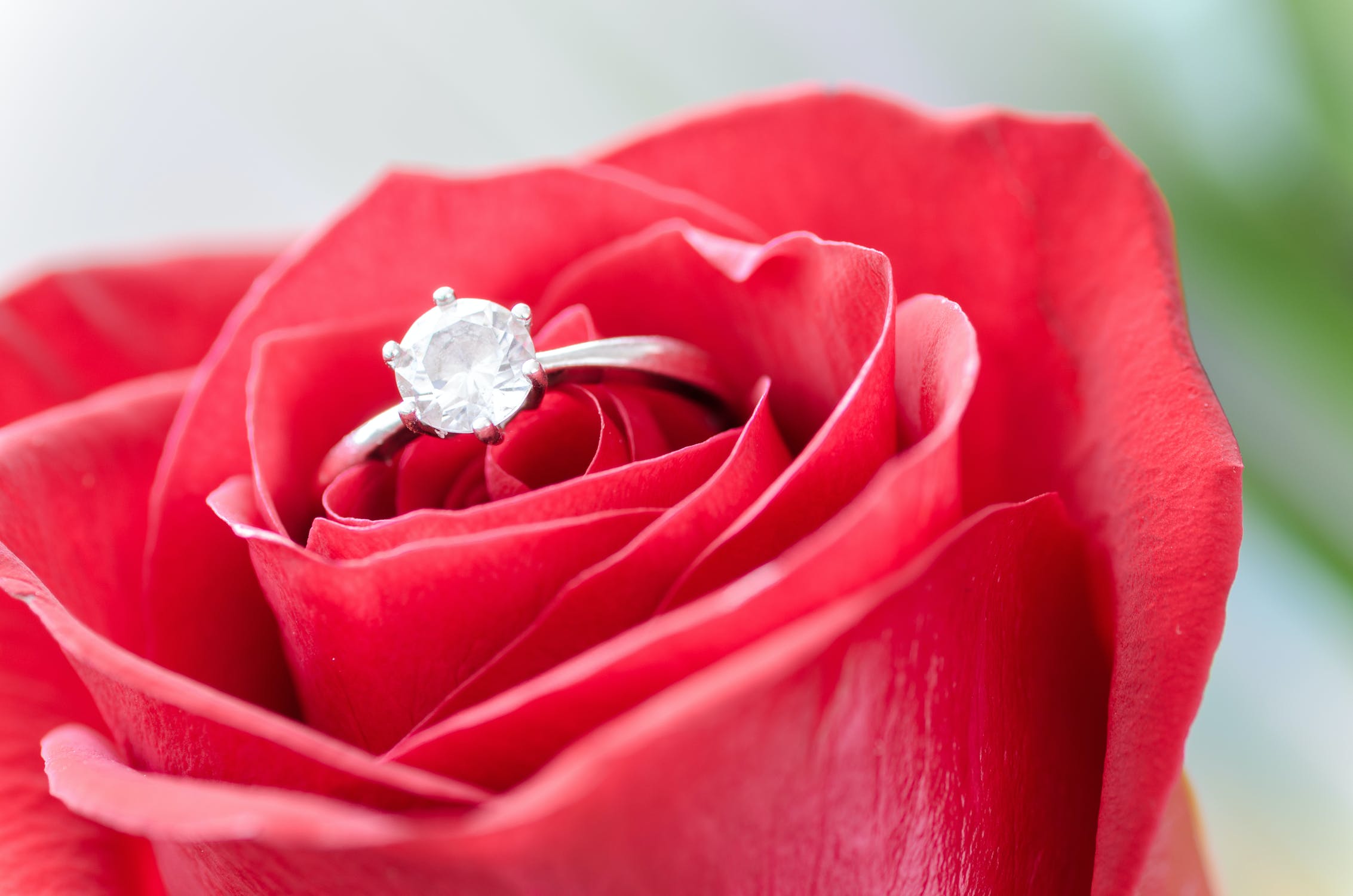You and your soon-to-be wife are ready to take on the next and wonderfully exciting chapter in your relationship— marriage. And you fully understand that as you pop the question, you’ll have to take out a small velvet box from your pocket and reveal a diamond ring.
After all, your future spouse is worth much more than the most precious gems in the universe.
So, to make her feel that she truly means the world to you, learn the diamond 4Cs and couple
your “Will you marry me?” statement with the ring that leads to matrimony.
Diamond Rings And Marriage Proposals: A Brief Walk Through History
Though both the Egyptian and Greek civilizations are known to have used engagement rings to legitimize marriage proposals, studies show that it was the Romans who were the first to practice this custom.
An engagement ring is worn on the “ring finger” of the left hand because it is believed that said finger has a vein which directly leads to the heart. Although scientific data does not support this, the custom is continually practised in many regions of the globe today, nevertheless. This, on the basis of the act serving as a symbol of being connected “by heart”.
Diamonds And Their 4 C’s
1. Cut
Considered as the chief characteristic that defines the quality of a diamond, a cut speaks of precision in dimensions, proportions, symmetry, and detailing, among others.
Contrary to what many think, a diamond’s cut isn’t limited to the sizing measurements of the gem. It is also a determiner of light reflection— scintillation. Excellent scintillation is what brings about that glorious sparkle and glamour that enlivens the aesthetic of the precious stone.
Though cuts are subject to the creativity of the cutters, you’ll find a number of popular ones, from the round brilliant cut, princess, emerald, cushion, the list brilliantly goes on.
According to GIA grades (the Gemological Institute of America is an internationally verified non-profit organization that focuses on the study of jewellery arts), there are 5 categories on the cut scale— Poor, Fair, Good, Very Good, and Excellent. The more vividly dazzling a cut, the higher it ranks on the said scale.
2. Colour
A diamond’s hue is graded by the GIA from D, the highest score (D-F are as close to colourless as possible) to Z, the lowest score (diamonds between the L-Z range carry a very visible warm hue).
Having mentioned these general specifications, the more colourless a diamond is, the higher its quality, and accordingly, its price.
But bear in mind that though an icy appearance is a high colour ranking, it shouldn’t impede a diamond’s scintillation.
In addition to this, the word “colour” here is different from actual “coloured diamonds” (i.e. pink, canary yellow, etc.). The latter are considered valued precious stones as long as they’ve achieved their colour naturally instead of through “fancy” treatments.
3. Clarity
Diamond clarity is all about clearness and perfection. The first refers to blemishes and/or the lack, thereof, as well as said blemishes’ bleakness, measurements, and location on or within the stone.
Another term that falls under “clarity” is “eye-cleanliness”. This has to do with how clear a gem is under a microscope, and whether or not it contains “inclusions”.
On the GIA grading chart, clarity starts at I2 or Inclusions 2, all the way up to FL or Flawless. Flawless diamonds are a rarity. However, IFs or Internally Flawless diamonds are much more plentiful than their FL relatives.
4. Carat Weight
Lastly, the 4th C— carat weight. Defined, it points to the actual weight of the diamond and not its overall size. Even if a diamond has a large cut, it’s still possible for it to have a low carat weight.
Now, you’re ready to purchase the perfect engagement diamond ring for the woman you have waited so long to finally marry, and spend the rest of your life with.

